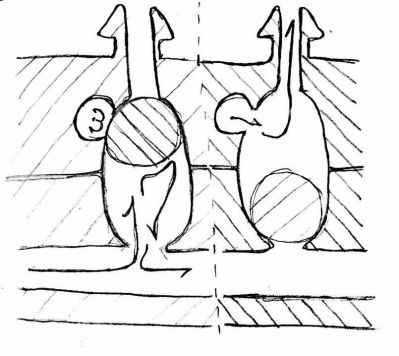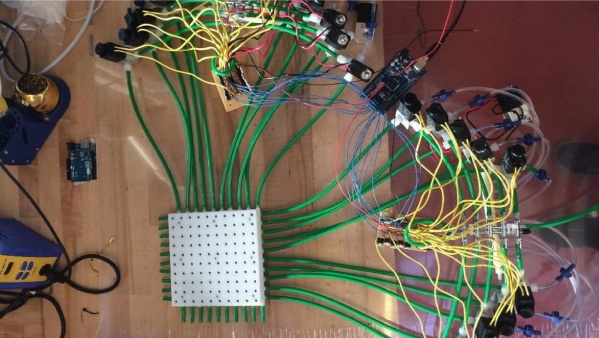This is a pretty cool project [Sebastian Morales] is working on – a 3D printed Pneumatic Multiplexer. Large interactive installations, kinetic art and many other applications require large numbers of actuators to be controlled. For these type of projects to work, a large number of actuators equals higher resolution and that allows the viewer to be captivated by the piece.
The larger the system becomes, the more complex it becomes to control all of those actuators. [Sebestian] wanted to move a large number of components with a relatively low number of inputs. He thought of creating a mechanical equivalent of the familiar electronic X-Y matrix that can control large quantities of outputs using only a few inputs – in a more descriptive form, Outputs=(Inputs/2)^2.
 He looked at chemical reactions that change liquids in to gases, but that seemed pretty complicated. Refrigerants used in air conditioning looked promising, but their handling and safety aspects looked challenging.
He looked at chemical reactions that change liquids in to gases, but that seemed pretty complicated. Refrigerants used in air conditioning looked promising, but their handling and safety aspects looked challenging.
Eventually, he decided to look at using “air logic“. Air logic uses pneumatic devices to create relays, limit switches, AND gates, NAND gates, OR gates, amplifiers, equivalent to electrical circuits. Electrical energy is replaced with compressed air. His plan was to build a multiplexer whose elements would open only if the combination of pressure between both lines was the right one. As in electronics, NAND logic is easy to implement. A moving element creates a seal and only allows air out if the bottom line was low and the top line was high.
He had access to a high resolution, resin based 3D printer which allowed him to create fully air-tight systems. He started with prototyping a small 4×4 matrix to test out his design, and had to work through 6 to 7 iterations before he could get it to work. The next step was to create a larger matrix of 100 elements controlled by 20 inputs (10×10 matrix). He created Omnifarious – a kinetic sculpture demonstrating the concept of shapeshifting objects. The Omnifarious is a hexecontahedron which would be able to transform its surface to render different geometries via 59 balloons on its surface. Below, you can check the videos of his progress building the various prototypes and another video showing the Omnifarious sculpture.












